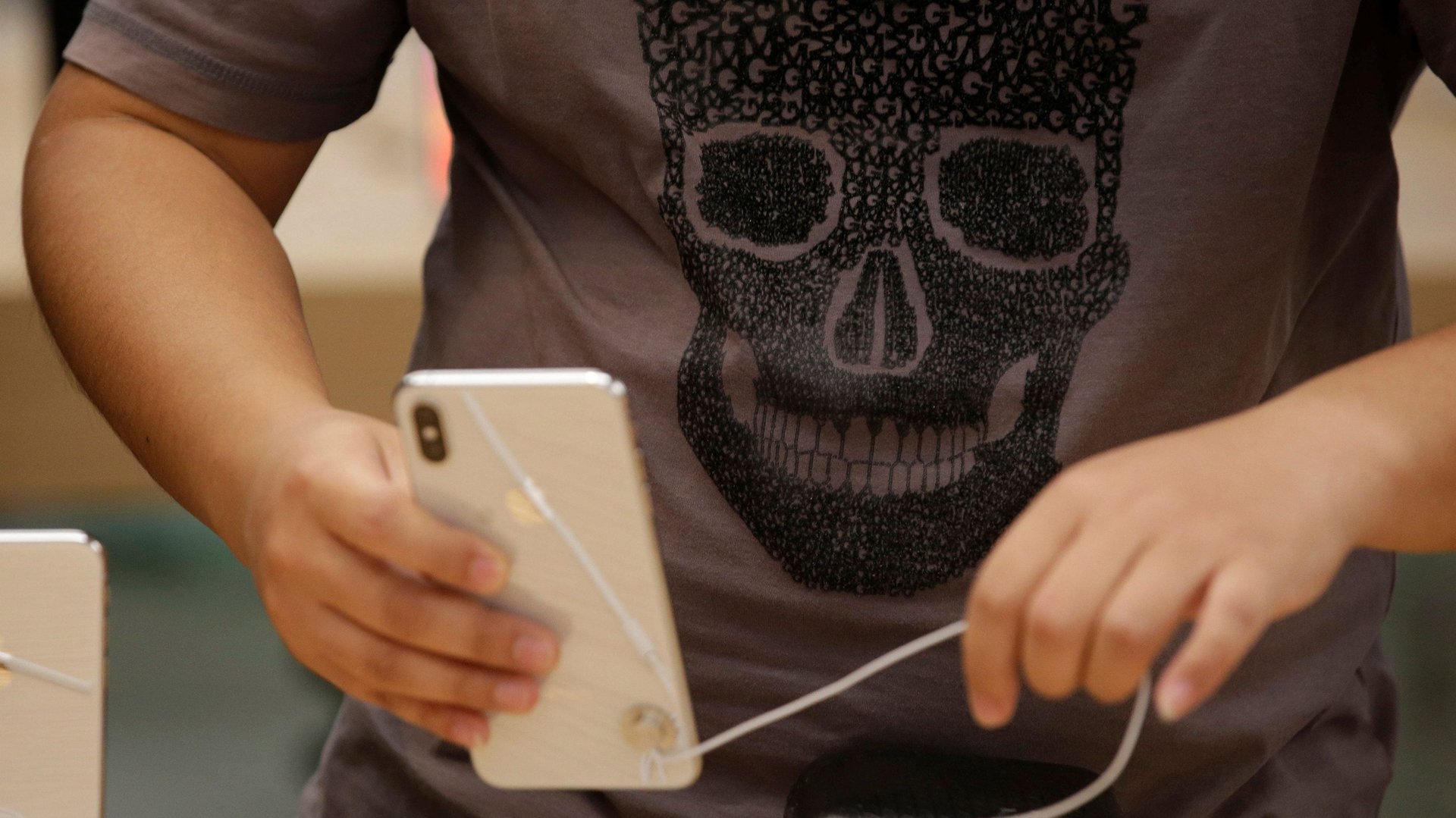The falling rupee is a “speed bump” in Apple’s India growth story
Apple’s India story is falling short of expectations.


Apple’s India story is falling short of expectations.
On Nov. 01, the Cupertino-based company said its global revenue for July to September 2018 had grown 20% to $62.9 billion from a year ago. International sales accounted for 61% of the total revenue. Apple follows an October-September financial year.
But India’s contribution hasn’t been great. “[O]ur business in India in Q4 was flat,” CEO Tim Cook said during an earnings call.
This is primarily because of the Indian rupee’s weakness against the dollar. High crude oil prices, a widening current account deficit, and strengthening dollar have dragged down the Indian rupee. Asia’s worst-performing currency has already lost over 10% of its value this year. And the outlook looks grim, too.
Apple is facing similar pressures in other emerging markets like Turkey, Brazil, and Russia, “where currencies have weakened over the recent period,” Cook said. “In some cases, that resulted in us raising prices and those markets are not growing the way we would like to see.”
But he sees India’s currency weakness as “speed bumps along a very long journey.” “There’s a huge number of people that will move into the middle class,” he said. “The government has really focused on reform in a major way and made some very bold moves.”
Unfortunately for Apple, the currency chaos is far from the only black spot.
Other speed bumps
The Silicon Valley behemoth’s hopes of finding China-like success in India keep running into walls.
iPhone shipments have taken a hit, likely due to its unaffordability. By March 2018, the Cupertino-based giant’s share in the world’s second-largest smartphone market halved to just over 1% from 2.5% a year ago, data from IDC India showed.
Meanwhile, the company’s top management in the country has been in churn. India head Sanjay Kaul quit in December 2017, sparking a number of other top-level exits.
Besides, the iPhone-maker has not yet opened a store in the country despite getting permission in January 2016. While Cook said Apple had “really great productive discussions with the Indian government,” he shared no concrete plans.
The company is also struggling to cap its sky-high prices in India. In 2016, the government dashed Apple’s plans to sell refurbished goods, given the country’s snowballing e-waste crisis. Then, in February this year, India hiked customs duties on iPhones to 20%.
One way for the firm to push down prices is to manufacture locally—an attempt it made with the iPhone SE. But given the iPhone’s aspirational value, the cheaper, older, smaller model isn’t a raging hit among Indians.